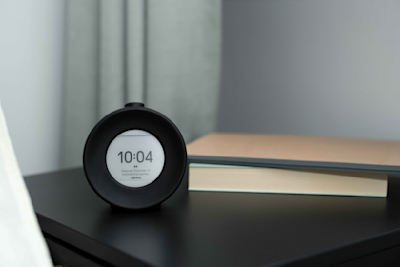
Are Wireless Chargers and Headphones Safe?
Technology is becoming more convenient.
We’d like to answer the question ‘are wireless headphones safe?’ as we’ve noticed a rise in the number of people concerned by how their wireless headphones might affect them. Most of these concerns, in terms of the potential health effects, tend to be about exposure to radiation.
Radiation, in the form of electromagnetic fields (EMF) emitted from wireless devices is considered to be of a lower frequency. However, the amount of time we are exposed to it would be longer than usual if we’re using our wireless headphones all day, for example, during our working hours.
Some gadgets are wireless so that the average user doesn’t need any additional cables if they’d like to listen to music or charge a smartphone. Although it might feel more comfortable, you might want to question it. Is it safe to use wireless chargers? Are Bluetooth headphones safe? Do you know how wireless technology works?
Wireless chargers, do you need them?
Inductive charging is the most common type of wireless charging. It is so popular that even if a smartphone does not have a wireless charging function, users can buy chips which change this by placing the device on a corresponding pad. Inductive charging creates an electromagnetic field around a transmitter, which is hidden in a charger. This field is picked up by a receiver, which is in the device. Power is wirelessly transferred from the base to the mobile phone.
Expert opinions on this system are divided, some have confirmed that the amount of EMF produced by chargers is too minimal to be harmful and others still place emphasis on the negative impact of non-ionizing radiation. Although it is true that small amounts of EMF are not going to make you ill immediately, you should reduce exposure where possible as long-term exposure to cell phone radiation isn’t a good idea.
When you use a wireless charger your level of exposure is higher. When you check manufacturers’ websites, you should find a Frequently Asked Questions (FAQ) section. The answer to the question: ‘How much radiation does this product emit?’ is not usually a numerical one. It’s unlikely that you’ll find a measurement and they’re essentially just asking you to trust them.
Try not to place your body near the inductive charger. Although charging your smartphone while you sleep is practical, it is important not to do this in your bedroom. Wireless technology is not as new as you may think. In 1899, the inventor Nikola Tesla started performing the first successful experiments on wireless power transfer.
He strongly believed that it would be possible to transmit power without any cables. His idea is a reality today over one hundred years later, but not exactly as expected. When you want to use a wireless charger, you will still need a cable. A pad with a transmitter has to be wired meaning only your mobile phone is free of cables. We are not keen on this solution.
When we are able to put a small device in our home which enables all of our mobile devices to be charged continuously and wirelessly, it will be a problem. This technology already exists but has yet to gain popularity due to the uncertainty surrounding it. Our advice is to limit wireless electronic devices in your household and not to multiply them if they are not necessary.
A girl wearing her wired headphones around her neck
Wireless headphones, are they safer to use than corded ones?
The answer to this question is no. Do you remember what happened when one of the most popular smartphone brands removed the audio jack from their latest phone? People were surprised, they felt as though they were being forced to use wireless headphones. The brand, of course, released their own model of wireless headphones as a solution to their lack of audio jack. Some users were concerned about radiation exposure.
There is an issue relating to the use of a transmitter and a receiver. Between them, an electromagnetic field is created, in the middle of which is your head and body. You won’t see any difference in the short term but over time exposure might make a difference. One tip to reduce your exposure is to use headphones with a built-in microphone when speaking on your mobile phone. It’s best to stick to regular, corded headphones rather than wireless ones.
Electromagnetic fields are everywhere, especially in cities with a lot of WIFi hotspots.
The number of wireless headphones sold worldwide is increasing (from 236 million in 2013 to an estimated 334 million in 2016).[1] The long-term risks of using Bluetooth connected devices is not easily predicted.
As Dr. Joel Moskowitz, a professor at the UC Berkeley School of Public Health stated in one interview: “We are playing fire here. Although we don’t know the long-term risks from using Bluetooth devices, why would anyone insert microwave-emitting devices in their ears near their brain when there are safer ways to use a [mobile] phone?”.
All images used are CC0 1.0 Universal (CC0 1.0).
Is there anything you’d like to add, have we missed anything? What do you think? Are wireless headphones safe? If you’re interested in sharing your experiences with us or writing a guest post for us, send us an email via hello@mudita.com!
Please feel free to get in touch via social media (send us some photos or videos too), you can find us on Facebook, Twitter and Instagram, let’s connect! To learn more about Mudita, take a look at our website and our other posts.
If you enjoyed reading this article, please share and recommend it!
Related stories

The Power of Motivational Quotes
Motivational quotes boost focus, resilience, and positivity. Discover their impact and how Mudita Harmony’s Custom Quotes bring meaning to daily life.

Mudita Kompakt & Mindful Tech Shine at IFA Berlin 2025
At IFA Berlin 2025, Mudita Kompakt and our mindful tech products drew attention for offering calm, minimalist alternatives to digital overload.

What Makes a Great Field Watch? Features to Look For
Learn what defines a great field watch: legibility, durability, water resistance, movement, and design. See how Mudita Radiant brings these features to life.
If you'd like to receive the best stories from our blog, keep up to date with our progress and get notified about our product releases and special discounts.